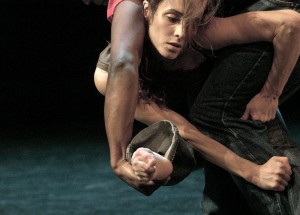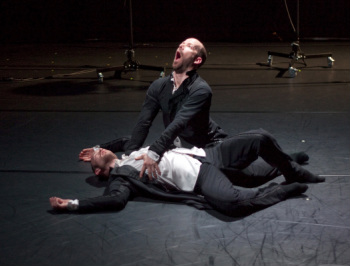by Sedgwick Clark
It’s a most improbable New York story: Broadway salutes a theater critic, of all things, by dimming its lights during prime box-office time prior to curtain. How often has that happened? No one would have been more astonished to receive this honor than its recipient, Howard Kissel, theater critic of the New York Daily News for 20 years, who died on Friday (2/24) at age 69 of complications from a 2010 liver transplant.
Howard and I shared a Midwestern upbringing and undying gratitude for living in New York City and being able to partake of its wonders. He was as unassuming, knowledgeable, and gentlemanly a member of the Fourth Estate as one could imagine. His critical judgments were direct, perceptive, and never gratuitously personal, laced with a droll, understated wit that always left one smiling. I had met Howard at the Russian Tea Room back in the 1970s when he was arts editor of Women’s Wear Daily and W magazine but only got to know him well in the ’90s. In between, he appeared in his one and only film as Woody Allen’s manager in Starlight Memories (1980). He wrote a biography of David Merrick and a study of Stella Adler’s teaching techniques. We saw each other frequently at Carnegie Hall and Lincoln Center, when we would compare notes and I could grill him about shows I should try to sandwich between my concertgoing. I never received a bum steer.
An S.R.O. audience at Howard’s funeral yesterday shared many tears and much laughter as he was remembered. His sisters, Anne and Judy, affectionately eulogized their big brother, saying that he always seemed to be from another planet, which they called “Howieland.” A friend recounted that Howard had been on a list for a liver transplant for some time, but when the hospital finally called he discovered he had tickets that evening for City Center’s Encores! presentation of Stephen Sondheim’s cult musical Anyone Can Whistle and opted for the show. It would be months before he got a second chance for a new liver.
Musical America was fortunate to have Howard writing theater reviews for its Web site on occasion in recent years, and he blogged under the title “The Cultural Tourist” for the Daily News and, more recently, the Huffington Post, in which he filed his last, bittersweet entry three days before his death. Both the News and the Times printed obits worthy of his charmed life.
And then, on Tuesday at 7 p.m., Broadway dimmed its lights for a minute in recognition of one of its own.
Looking Forward
My week’s scheduled concerts:
3/2 Carnegie Hall. Vienna Philharmonic/Lorin Maazel. Sibelius: Symphonies Nos. 1, 5, and 7.
3/5 Zankel Hall. Making Music, Jeremy Geffen, moderator. Soloistes XXI. Saariaho: Echo; Nuits, Adieux; Lonh; From the Grammar of Dreams; Tag des Jahrs.
3/6 Carnegie Hall. Boston Symphony/John Oliver. Tanglewood Festival Chorus/John Oliver. Christine Brewer, soprano; Michelle DeYoung, mezzo; Simon O’Neill, tenor; Eric Owens, bass-baritone. Beethoven: Missa solemnis.

